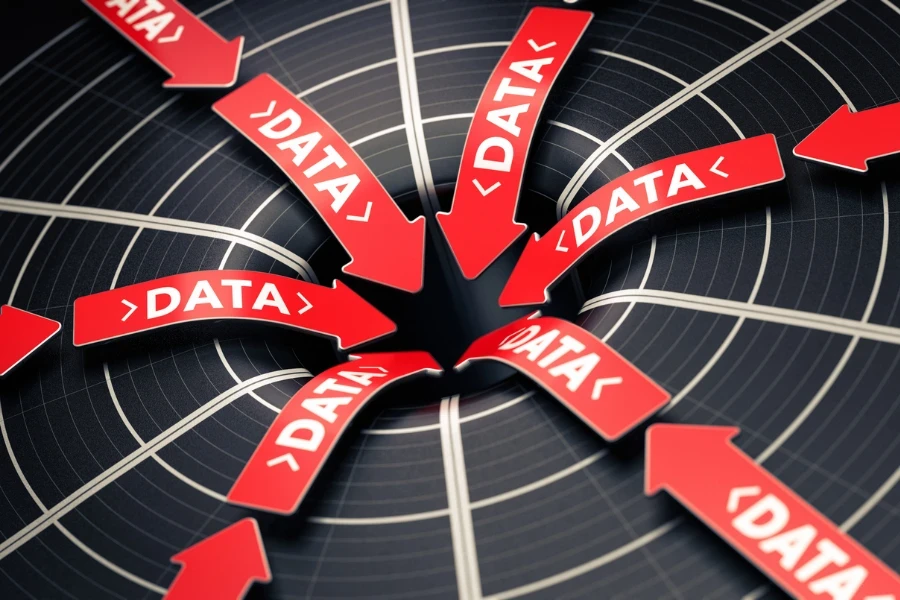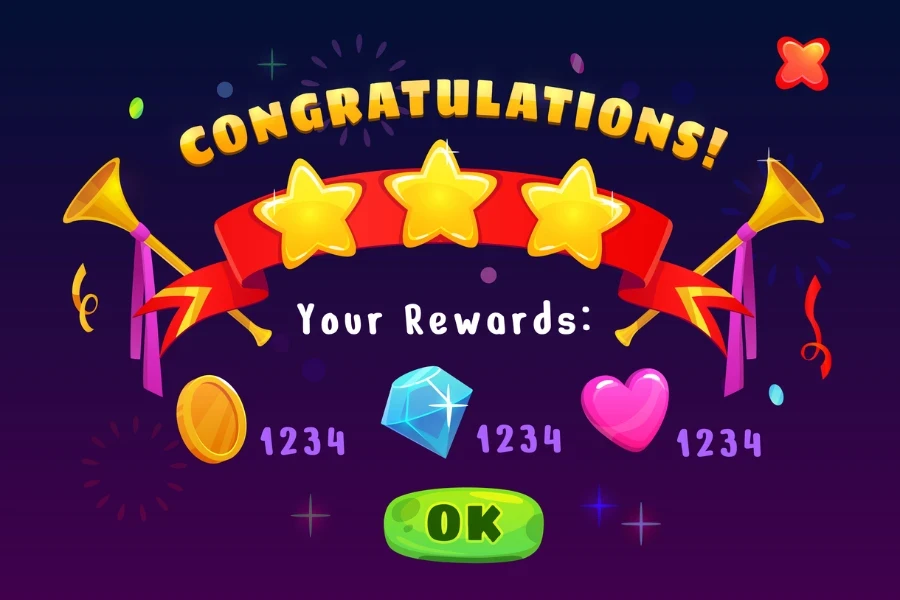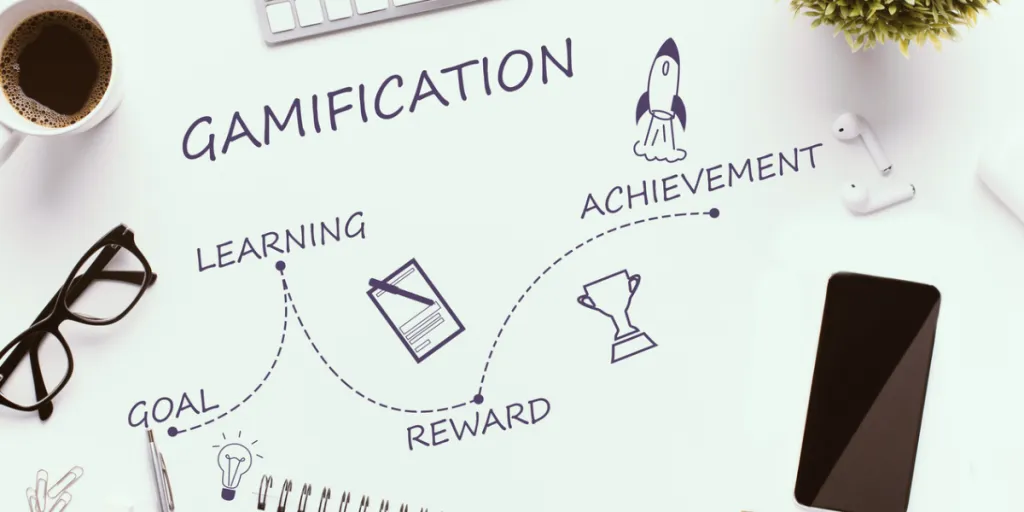In the business of selling your products online, every day you work hard to drive more traffic, increase conversion rates, and boost revenue. However, in today’s digital world, it’s not enough to simply build an e-commerce store and wait for customers to show up. You need to actively give them an experience that keeps them coming back.
That’s where gamification comes in, as it allows you to incorporate gaming elements into your digital marketing strategy, tapping into something primal in all of us: the desire to play and win. This article will, therefore, look into gamification digital marketing and explain why this marketing technique is key for your business’s growth.
Table of Contents
What is gamification in e-commerce?
How large is the global gamification market?
Why is gamification important for your e-commerce business?
Tips before launching gamification activities
Top gamification strategies to boost sales for your e-commerce business
Conclusion
What is gamification in e-commerce?
Gamification is a form of digital marketing that uses game-like elements like points, badges, and leaderboards to increase engagement. E-commerce businesses have started using gamification strategies to motivate their customers and build a strong brand.
This is because gamification taps into people’s psychological motivations, which is to play to win. It entails offering rewards and recognition for completing actions such as purchases, reviews, referrals, or social shares, giving customers an urge to engage more with your brand. Additionally, leaderboards showcase top customers and their products, while badges publicly recognize and reward their loyalty and participation.
Other elements, such as progress bars, countdown timers, and challenges, create a sense of urgency and motivation. Customers are able to earn points and level up for repeat purchases or big spending milestones.
How large is the global gamification market?
The global gamification market is huge. In 2022, it had a valuation of US$ 10 billion, and its high demand shows that it is on track to cross the US$ 116.68 billion mark by 2032. It will grow at a 27.9% compound annual growth rate (CAGR) between 2023 and 2032.
This growth arises from a large majority of enterprises employing game-like aspects to provide great customer experience with the intention of further motivating and inspiring their products to consumers.
North America is the most significant in adopting gamification techniques, with a 41% share, closely followed by Europe at 31% and the Asia Pacific at 16%.
Why is gamification important for your e-commerce business?
1. Increased data acquisition

Data is critical for any modern business today. Gamification enables you to obtain information about consumers’ interests and behavior, which you can use in future marketing campaigns. The more information you have about your prospects and existing customers, the more effective you are in tailoring your advertisements.
2. Enhanced user engagement
By adding game elements to your marketing efforts, your business receives more engagement, raising your conversion rates and, consequently, more revenue. Researchers revealed that customers engaged with a brand spend 23% more compared to a typical consumer.
Moreover, gamification often increases consumer satisfaction and attracts new clients. One report revealed that 60% of customers are willing to buy from a brand that relates to gaming.
3. Improving customer loyalty
When your business implements gamification, not only do you witness a significant rise in customer engagement, but you also can retain clients more easily.
According to one study, there was a 15% rise in brand awareness and a 22% increase in brand loyalty through gamification. Gamification is, therefore, crucial if you want to maintain your customer’s loyalty. The more loyal customers you have, the less, the more money you save trying to attract new ones.
4. Reduce cart abandonment
Cart abandonment is one of the largest problems that online stores face. The average cart abandonment rate in e-commerce stores is 69.99%, which is alarmingly high, according to a recent study.
People quit their carts for many reasons, and among the reasons is a lack of engagement. If you want to lower cart abandonment, you may try putting a time limit on some of your offers to persuade users to complete their shopping. By doing this, you can encourage more customers to make a purchase before time expires.
5. Social sharing and virality

An effective gamification marketing strategy often includes social sharing. This enables users to share their achievements with their followers on social media sites like Instagram, resulting in word-of-mouth sharing marketing, thus boosting your marketing efforts.
Sharing through socials can improve your brand’s exposure, leading to viral growth and a wider target reach.
6. Buzz for new launches
Gamification strategies can be aimed at creating excitement and eagerness when introducing a new product in the market. You can generate this enthusiasm and buzz for your new products by integrating game elements into your marketing campaigns.
7. Targeting Gen Z

The Gen Z population is highly receptive to gamification since they spend a lot of time interacting with games and digital content. Therefore, using gamification to target them can be a good strategy for boosting your business. In fact, between US$ 29 billion and US$ 143 billion of US consumer expenditure is attributed to millennials and Gen Z consumers in the 18 – 34 age group.
Tips before launching gamification activities
1. Know your audience
When you are putting together any kind of program for your customers, it’s important to know who you are dealing with. Whether it is a loyalty program or a giveaway contest, people want different things.
You need to separate your audience into groups so you can offer each one something they will actually find useful. Remember, what gets one person excited won’t do a thing for someone else. So, take your time to figure out what resonates with each segment of your customers.
2. Define your goals
Having a clear goal in mind is essential before launching a gamification marketing campaign for your business. Setting a goal helps guide your decisions on who you are trying to reach with the campaign, how long you want it to run, what kind of rewards or benefits you will offer participants, and other details.
Knowing what you want to achieve upfront helps make sure all your other choices for the campaign are aligned and moving your business in the right direction.
3. Keep it simple
Keeping the game simple and entertaining is a key tip. The last thing you want is for people to get bored or confused trying to get bored trying to figure out how to play.
That is where gamification tools come in handy – they make it a breeze to add game elements and rewards to your marketing. Gamification software makes games entertaining so that your customers can stay motivated to participate and help you get the results you are looking for from your campaign.
4. Promote and educate

Launching your campaign isn’t enough. You need to get your customers involved. This can be through promoting it on your website, in newsletters, and on social media to get more people to participate.
You will also need to educate people on how the program works, the benefits of participating, and the rewards they can earn. By explaining to them how simple activities like writing reviews, sharing on social media, or making repeat purchases to earn them points and status, it can boost the success of your marketing.
5. Continuously optimize
Once your gamification digital marketing campaign is live, monitor how customers are engaging and make improvements. You can look at which rewards and activities get more participation and survey customers to find out what they like and what they don’t like.
The data and feedback you collect should help you update the campaign regularly to maximize results. With ongoing optimization, your gamification strategy will become increasingly effective over time.
Top gamification strategies to boost sales for your e-commerce business
1. Hold a competition and offer exclusive prizes
People enjoy good competition, and you can provide that for your customers in exchange for nice prizes. One idea is to get users in an app or your subscribers competing against each other in some kind of raffle. This way, your customers can have a chance to win exclusive rewards.
KFC’s shrimp attack competition is one example that helped the franchise increase their revenue by 106%. You could also give out promo codes or gifts to users submitting their content, progress, or milestones to the community tab inside the app. As that happens, you will start building a community that connects with all your customers.
Their loyalty will grow, and soon, everyone will be sharing stuff, helping each other out, and staying loyal to your brand. A little competition can go a long way towards customer satisfaction.
2. Reward customers with new invites
To gamify your e-commerce experience, you may also design a referral program. In your referral program, you may give incentives to people referring their friends or other customers to your e-commerce website. When a user signs up, the person inviting them gets a reward.
This may encourage them to tell other people about your store. You may also take a step further by rewarding both the inviter and the invitee for joining or buying a product from your store.
A good example is 100% Pure, an organic beauty products store, which implemented a referral program. It was able to earn them US$ 244,000 in referral revenue and a three times increase in purchase frequency from users.
3. Use quizzes and trivia
Quizzes and trivia are great for people to engage and keep coming back to your store. You can ask them all sorts of questions and reward the players for getting answers right or even just playing along. It gives your customers a chance to test their knowledge about your brand or products.
You can also use the information from those interactive parts to personalize what people see based on their answers. For instance, companies like Fabletics use quizzes to give customers personalized products. All-in-all, it’s a win-win. Customers will have a good time, and you will fetch some data.
4. Don’t give discount codes, let customers win them

Allowing customers to earn discount codes instead of directly giving them is another tip to build your business with gamification. Challenging your consumers and providing them with the opportunity to receive discounts in exchange for taking part has the potential to increase the number of people interacting with your brand.
An example is Dolap, a Turkish C2C platform that used this strategy to reward its customers. They used a “find the surprise code” game from Storily, which was able to engage and excite their customers.
5. Celebrate leaderboards to increase competition
Leaderboards are an excellent method to get people in a competitive spirit. Depending on your gamification strategy, you can use leaderboards in several ways.
Among them is building a leaderboard that ranks users based on various types of engagement. You can rank users who perform tasks such as onboarding procedures or in-app challenges.
You could also rank them depending on how they perform in the contest. Take the example of Waze, which ranked and rewarded its users for sharing live traffic updates, helped increase their engagement, and earned them a 5-star rating. This can keep your users participating in order to reach the top of the board, which results in increased loyalty and revenue from sales conversions.
Conclusion
In summary, these are a few ways that gamification in digital marketing can boost your e-commerce success. By tapping into people’s innate desires for rewards, achievement, and competition, you create an experience that keeps them coming back.
Gamification can help you drive more traffic, increase conversion rates, build a strong customer loyalty base, and spread word-of-mouth marketing. Therefore, start implementing various gamification strategies on your e-commerce website and watch your sales and profit margins escalate.




